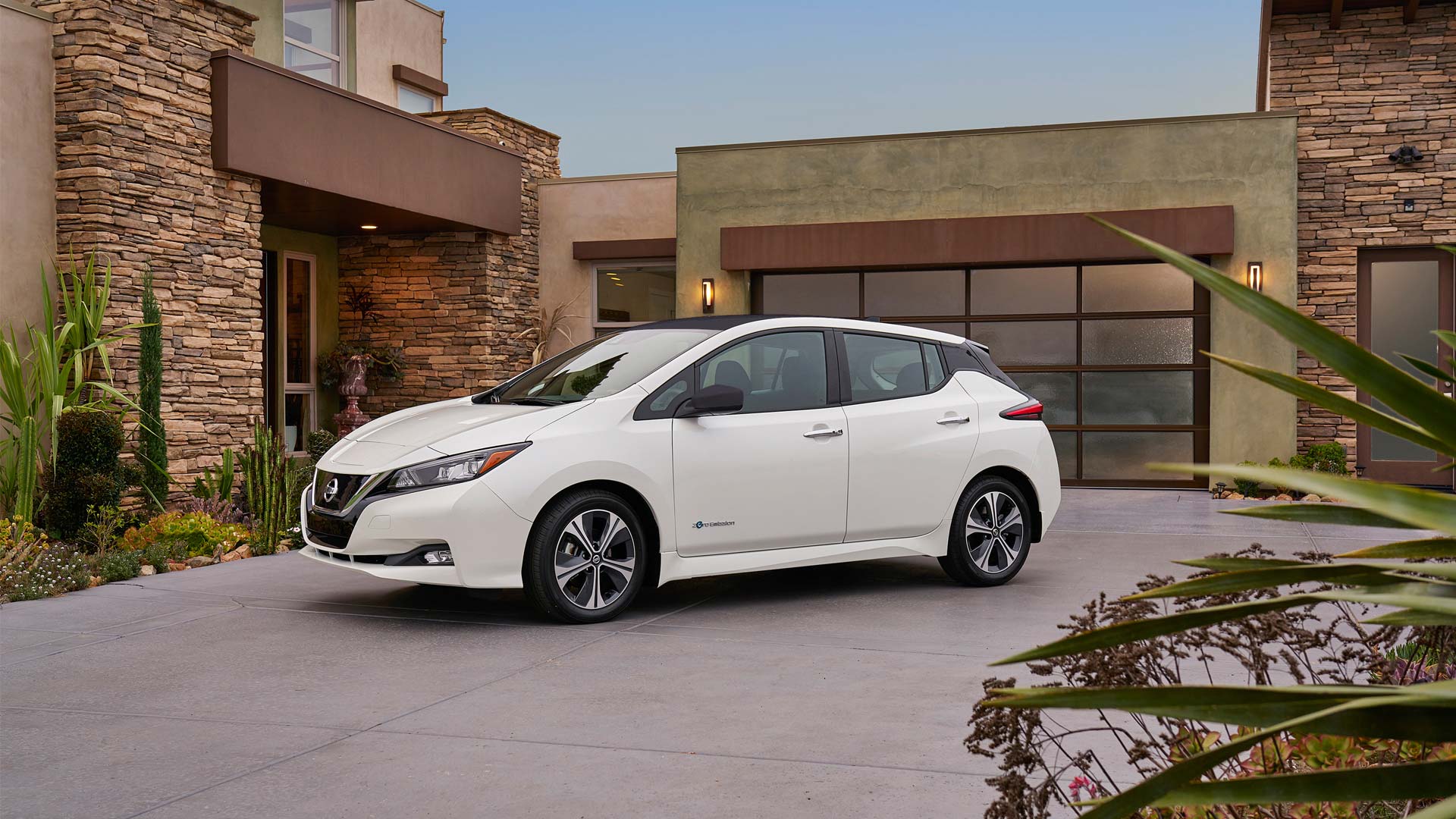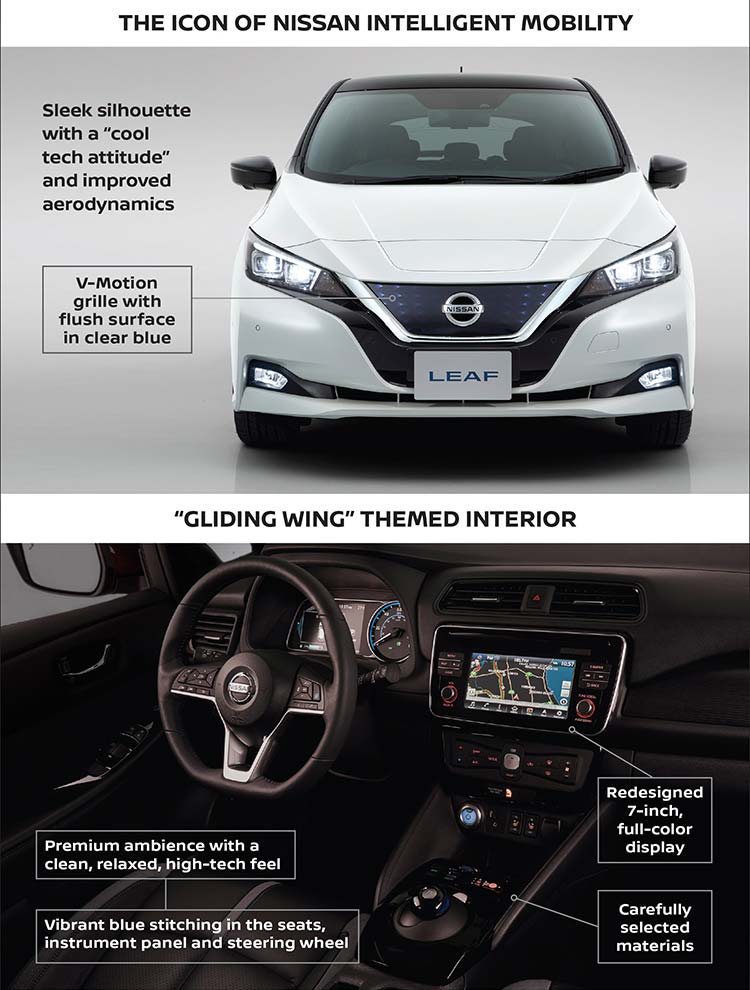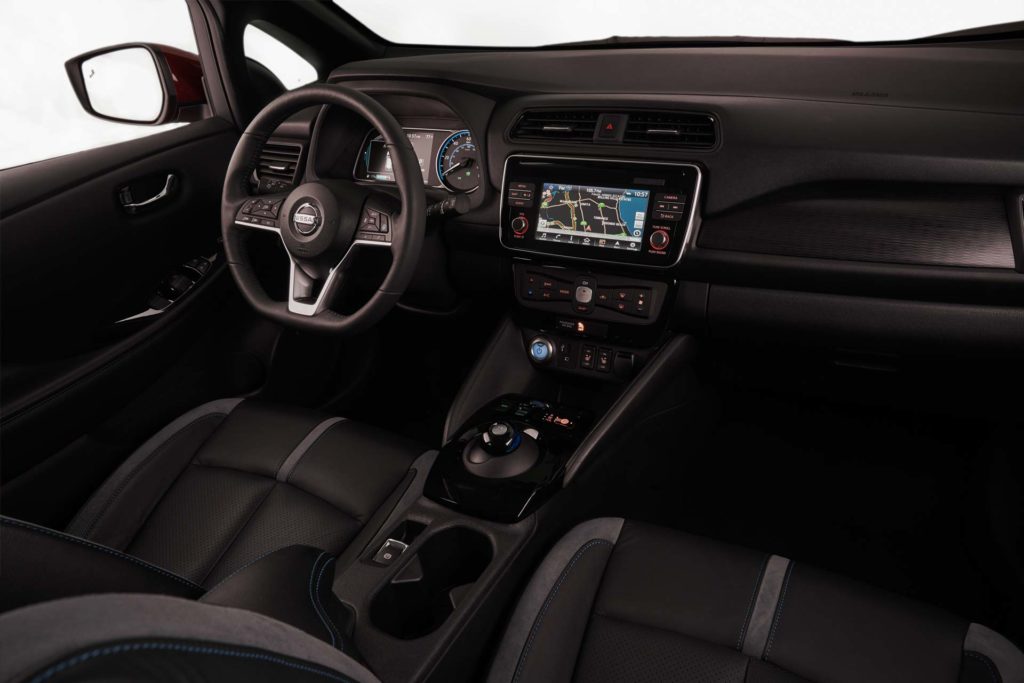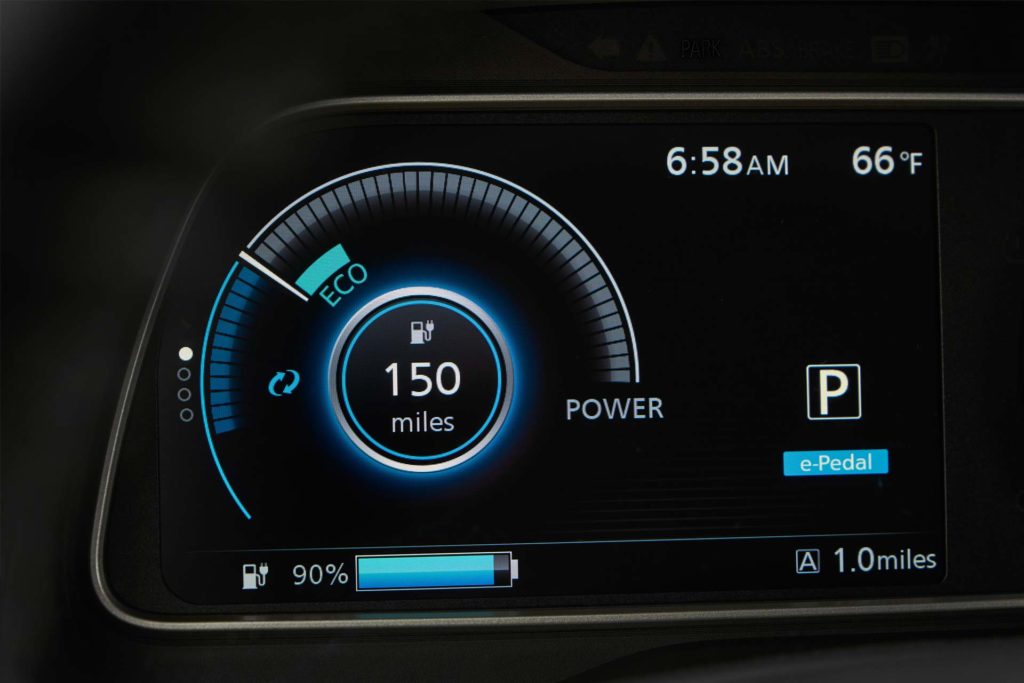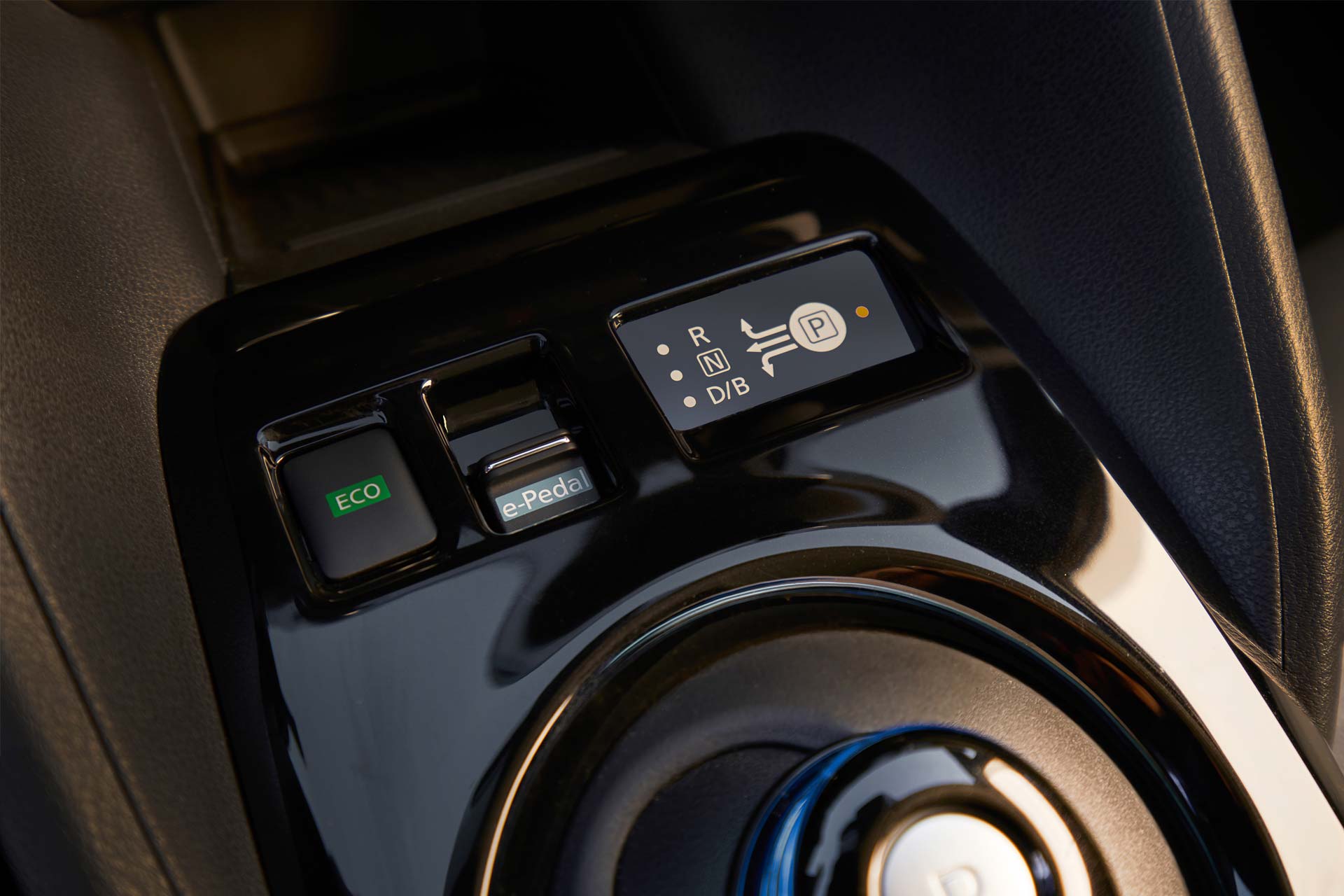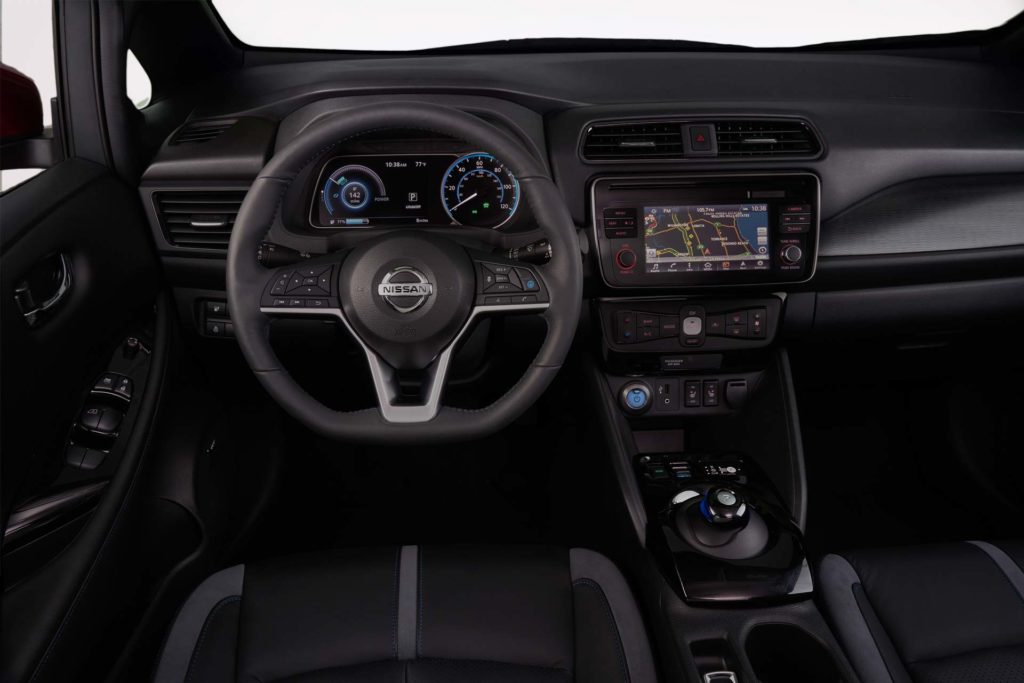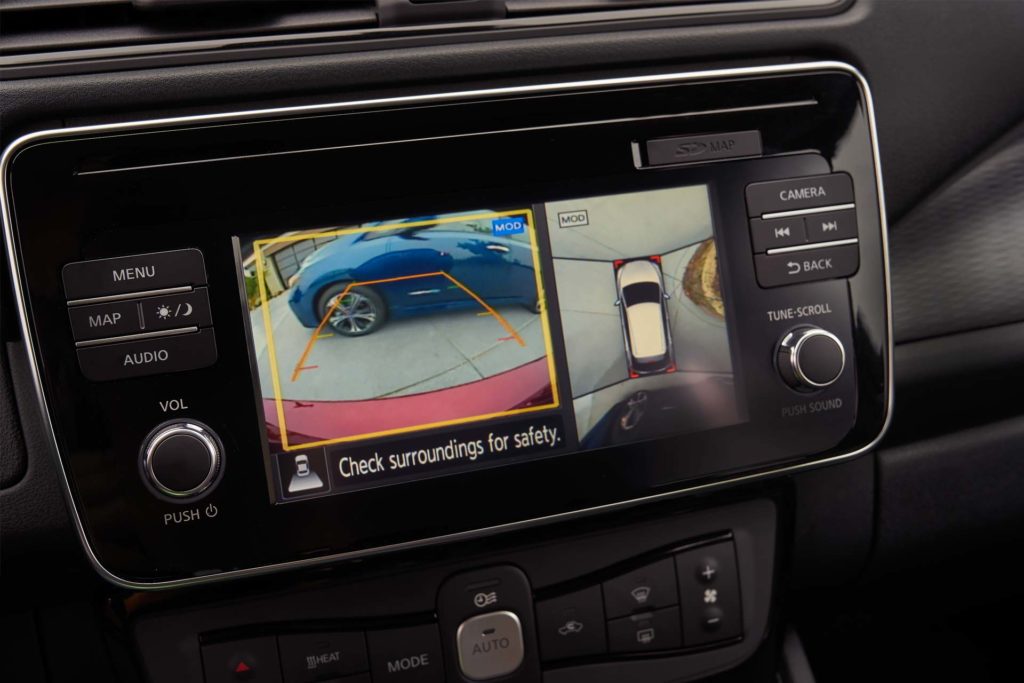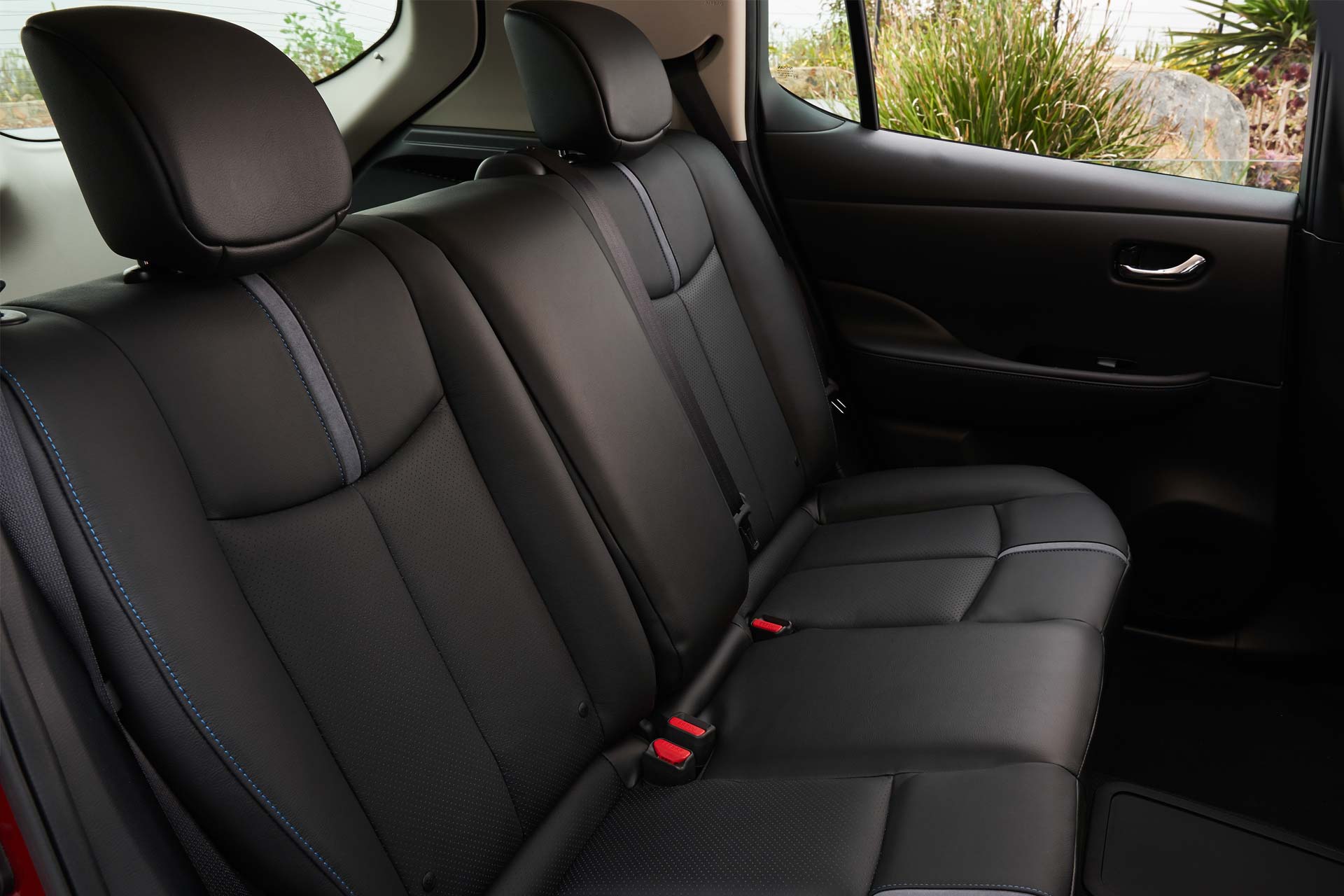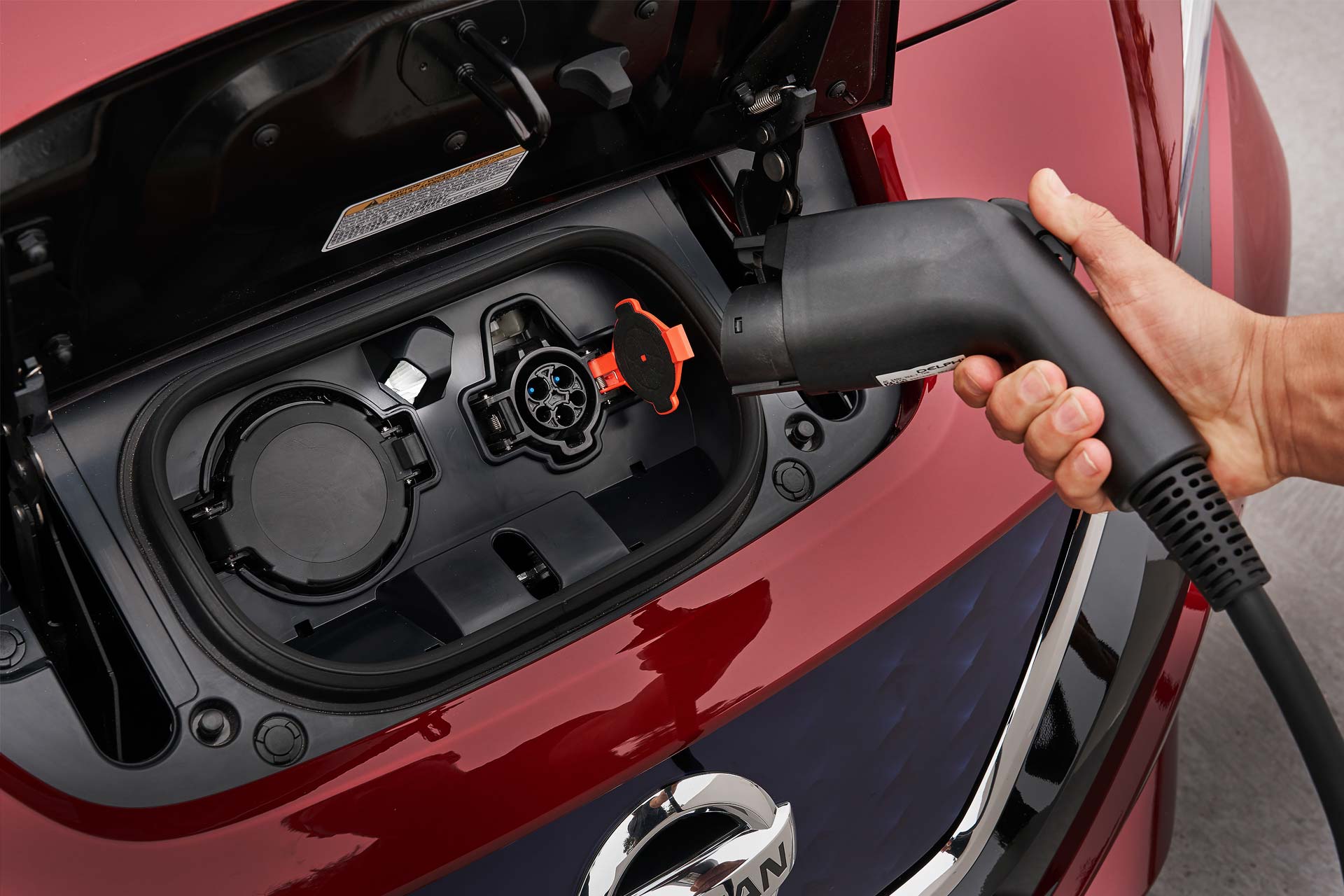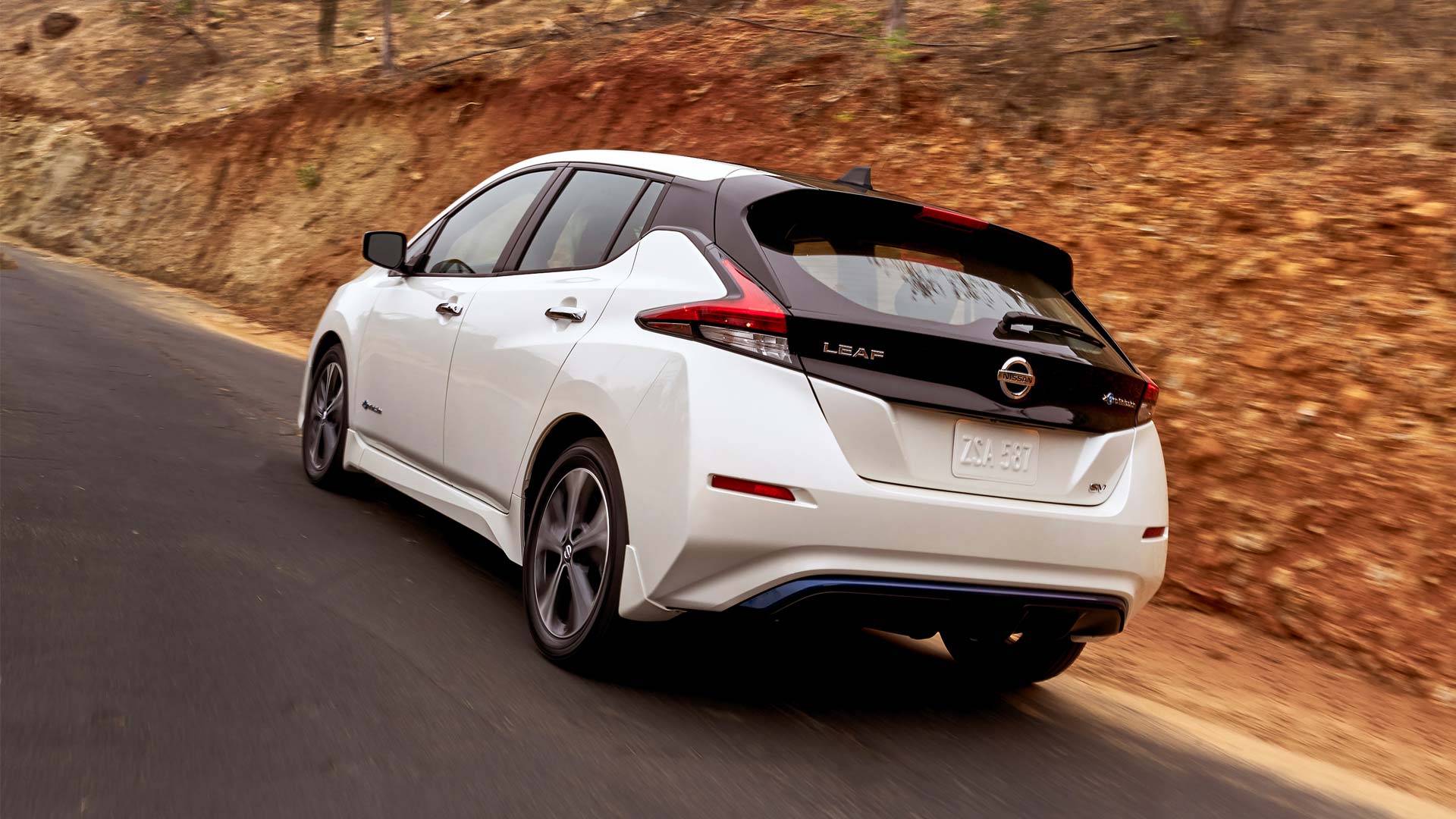Nissan has taken the wraps off the second-generation Leaf in Las Vegas, United States. The EV goes on sale in the U.S. early 2018 and will be available in all 50 states.
The new Leaf gets its design cues from the IDS Concept unveiled at the 2015 Tokyo Motor Show. In Nissan’s words, the exterior design has a sleek silhouette and a “cool tech attitude”. The signature V-Motion grille has a 3D mesh pattern with a bluish tint.
Other exterior features include LED projector headlamps and a signature rear combination lamps. The integrated spoiler gives the new Leaf a sporty look. Overall, the aerodynamic design has resulted in a drag coefficient of 0.28 Cd.
Interiors are equipped with a 7-inch TFT display that shows a power gauge meter by default. Those who opt for the navigation system will get Apple CarPlay and Android Auto as well. Other features include generous storage spaces, a 12-volt power outlet, a USB port, and increased luggage space.
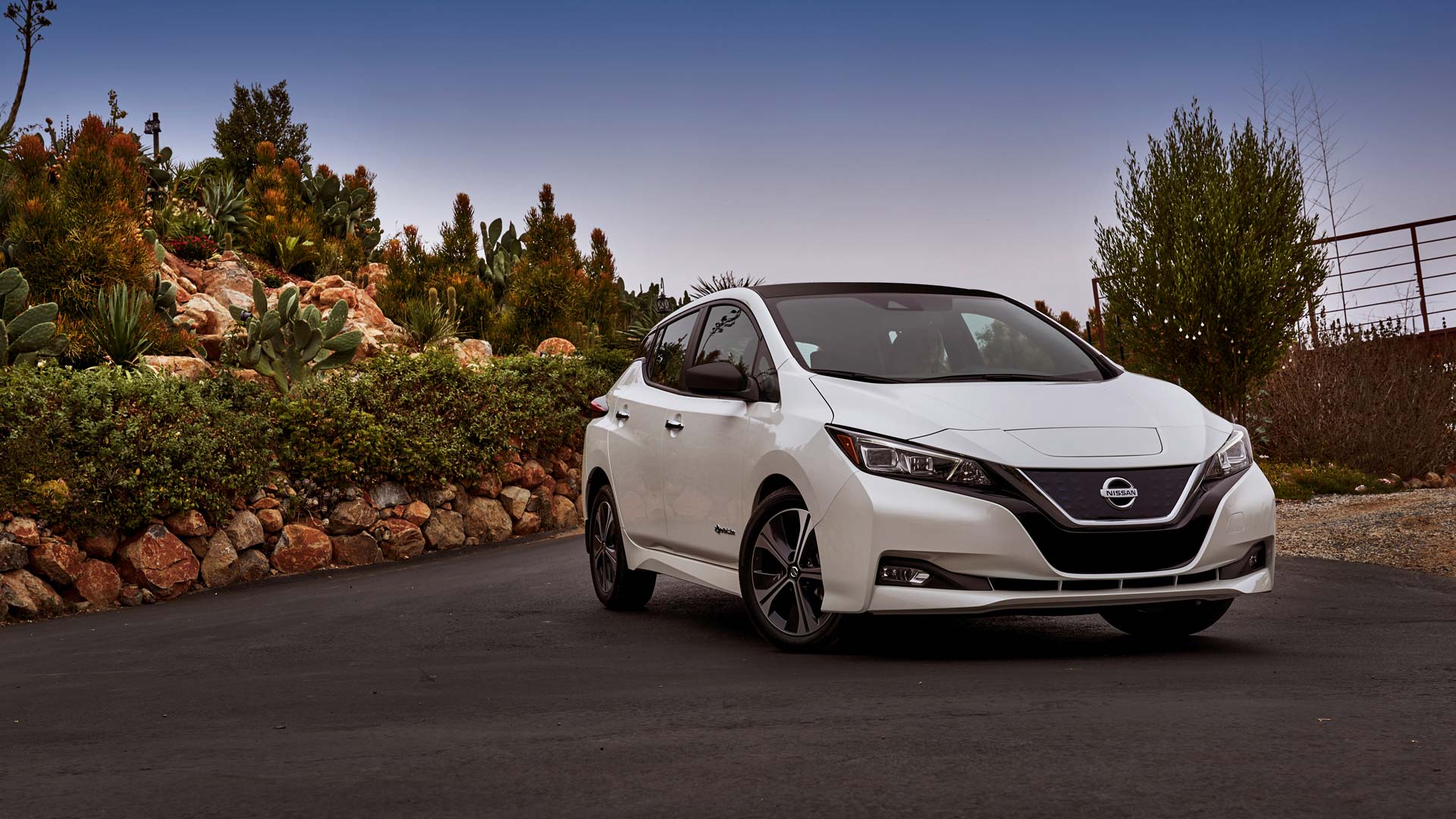
Powertrain
The ‘e-powertrain’ as Nissan likes to call it, delivers an output of 147 hp, 38% more than the previous-generation Leaf. The torque has been increased by 26% to 236 lb-ft (320 Nm). The car’s 40 kWh lithium-ion battery pack delivers an estimated range of 150 miles (241+ km). The battery pack occupies the exact same dimensions as that of the previous-generation Leaf. The individual cell structure of the laminated lithium-ion battery cells has been improved, representing a 67% increase in energy density versus the original 2010 Leaf model, Nissan said.
ProPilot Assist
As announced before, the new Leaf comes with ProPILOT Assist – a single-lane driving assistance technology. Once activated, it can automatically control the distance to the vehicle in front, using a speed preset by the driver (between about 18-62 mph/29-100 km/h). There is also the ‘e-Pedal’, which is offered as standard equipment on all grade levels. It allows the driver the simplicity of accelerating, decelerating and stopping the car by using the accelerator pedal alone.
By simply releasing the accelerator, the Leaf will come to a smooth and complete stop without the need to press the brake pedal. With a deceleration rate of up to 0.2 g, the e-Pedal eliminates the need for drivers to constantly move their foot from the accelerator to the brake pedal to slow down or stop. This helps reduce fatigue and increase enjoyment, Nissan said.
Studies by Nissan in Japan, Europe and the U.S. have shown that the Leaf’s e-Pedal reduces the number of times the driver must apply the brakes while commuting in heavily congested traffic. While the conventional brake pedal must still be used in aggressive braking situations, the e-Pedal lets drivers use a single pedal for more than 90% of their driving needs, the company added.
Other safety systems include Intelligent Lane Intervention, Lane Departure Warning, Intelligent Emergency Braking, Blind Spot Warning, Rear Cross Traffic Alert and Intelligent Around View Monitor with moving object detection.
Nissan said that the new Leaf’s electric power steering system has been improved, with enhanced feedback from the road surface. This is thanks to a software upgrade, new control logic working in conjunction with the steering angle sensor, and a 10% increase in steering torsion bar stiffness. Additionally, the urethane bump stop for the rear suspension has been replaced by a rubber stop to reduce shocks and bumpiness when driving on uneven roads.
Prices start at $29,990, $690 below the current Leaf.

Leave a Reply
Note: Comments that are unrelated to the post above get automatically filtered into the trash bin.
